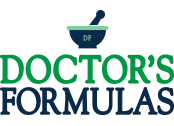Selenium and Reduction of Oxidative Stress
Selenium and Reduction of Oxidative Stress
Selenium, as an antioxidant, has been implicated in the development of autoimmune thyroiditis (AIT). Many studies showed selenium supplementation could decrease thyroid autoantibodies in patients with AIT. However, the underlying mechanisms have not been well determined.
Therefore, we performed a clinical study to investigate the possible mechanism of beneficial effects of selenium treatment on AIT patients.
Methods
Forty euthyroid patients with AIT were randomized into two groups. Group, I was treated with 200 μg/day selenium supplementation, and group II received a placebo over a 3-month period.
Thyroid-stimulating hormone (TSH), thyroid peroxidase antibody (TPOAb), antithyroglobulin antibody (TgAb), malondialdehyde (MDA), total antioxidant capacity (TAC), and superoxide dismutase (SOD) were measured before and 3 months after treatments.
Additionally, twenty healthy volunteers also served as a control group for the evaluation of such parameters in basic conditions.
Results
Totally, 32 patients (group I, n = 18; group II, n = 14) completed the clinical study and were incorporated into the statistics.
MDA level was higher and SOD activity and TAC were lower in patients compared to healthy individuals. After 3 months, TPOAb titer significantly decreased within the group I but did not change within group II.
There were also no statistically significant changes in TSH and TgAb titers within the two groups.
Additionally, decreased MDA level (from 6.8 ± 1.3 nmol/ml to 4.9 ± 0.7 nmol/ml; ) and increased TAC (from 10.0 ± 1.9 mmol/l to 12.9 ± 3.1 mmol/l; ) and SOD activity (from 72.3 ± 10.3 U/ml to 84.3 ± 13.2 U/ml; ) were simultaneously observed after 3 months’ selenium treatment.
Moreover, there was a negative correlation between TAC and TgAb/TPOAb and a positive correlation between MDA and TgAb/TPOAb in AIT patients.
Our findings support the hypothesis that selenium treatment could decrease TPOAb titer via enforcing the defense against oxidative stress in euthyroid patients with AIT, which may be a potential underlying mechanism.
Story Source:
International Journal of Endocrinology Volume 2020 ID 9210572 https://doi.org/10.1155/2020/9210572

